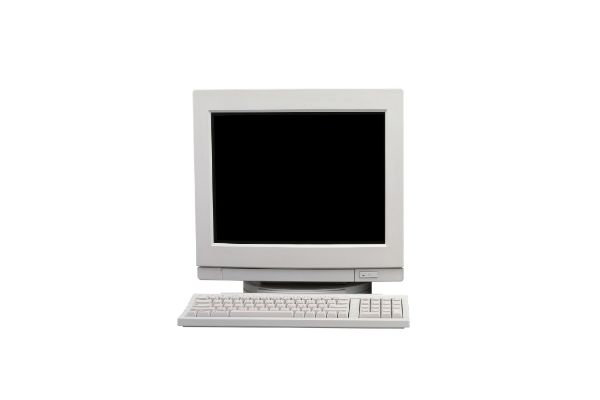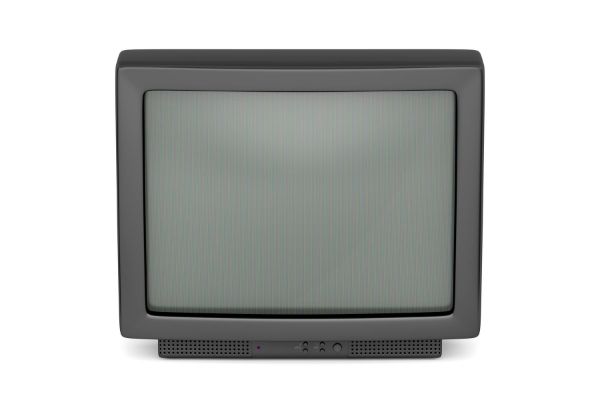Disclaimer: This post may contain affiliate links, meaning we get a small commission if you make a purchase through our links, at no cost to you. For more information, please visit our Disclaimer Page.
The response time of CRT monitors is significantly lower than that of other display technologies, which is a good thing. However, this singular feat doesn’t make CRTs better than LCD monitors. Newer display technologies have so many advantages that make CRT monitors look dated in comparison.
Table of Contents
What Is Response Time in Monitors?
To understand the concept of the response time of CRT monitors, it’s important to learn what response time means per se. Response time is one of the most important variables to consider when buying a monitor for a reason.
The simplest explanation of response time is the time required for a monitor to change between colors. In most cases, it’s measured by the speed it takes for black pixels to change to white and vice versa. Therefore, the response time of a monitor usually depends on its maximum refresh rate.
While two monitors with the same refresh rate may have different response times, there is usually a correlation. If the response time with a specific resolution goes above a specific limit, users may experience ghosting. Ghosting is another unfavorable behavior of certain monitors.
In a 60Hz monitor, which is the most popular at the moment, the response rate must be less than 17ms. This figure lowers with the increase in refresh rate till infinity. In short, this explains why most gamers go for higher refresh rate monitors.
So Do CRTs Have a Lower Response Time Compared to Other Displays?
Now that you have a good idea of what response times mean, you may doubt the information you had. You already know CRTs are worse than LCDs, but you’re hearing that they have a slower response time. As unbelievable as it sounds, CRTs indeed have a slower response time than most display technologies.
The reason for this boils down to how CRT monitors work, compared to the competing LCD technology. For example, LCDs work to make response time noticeable, while that has never been a problem with CRTs.
Before you rush to purchase a CRT monitor, you should know that this does not make CRT monitors superior. First, LCD manufacturers have long figured out the solution to the problem, and second, CRTs don’t fare much better anyway.
With that said, it’s time to explain why you need to worry about the response time on an LCD monitor.
The Ghosting Effect
When the first LCD monitors hit the market, customers complained about a phenomenon dubbed “ghosting.” The most basic cause of ghosting is low response times, but the manifestation of low response times are more complex.
On an LCD monitor, an astronomical number of liquid crystals are joined together to make your monitor screen. Each of these liquid crystals can display colors with the help of a backlight or reflector. The state of a liquid crystal determines if light falls on it to display something on the screen.
In short, the reason ghosting exists is the time it takes for the physical wrapping and unwrapping change to occur. This is because the twisting and turning of the liquid crystals is a physical change, and each physical change takes measurable time.
When the time taken is slower than usual, the screen doesn’t display the needed image quickly, causing the ghosting effect. While this was a problem on early LCD monitors, it was never a problem on CRT displays.
CRT monitors don’t experience ghosting, mainly because there are no wrapping and unwrapping crystals. When a CRT monitor needs to output something on display, the electron gun simply shoots light at the location. While this system has obvious disadvantages, a heightened response time isn’t one of them.
It’s important to note that CRTs have response times, but they were always lower than you should worry about. On the other hand, the earliest LCD monitors received lots of backlash for ghosting due to low response times.
However, taking this information at face value will lead you to make the wrong decisions. Besides response times, there’s also another technology known as input lag. Input lag and response time are equally important, especially for a gaming TV or monitor.
The following sections will explore the difference between input lags and response times and why they matter. Also, you’ll learn why LCD monitors are still better than CRTs, even with noticeable response times.
Do CRTs Have Input Lag?
Before answering this question, it’s important to examine what input lag means in monitors. Input lag refers to the time difference between taking action and the action reflecting on your screen. From this description, it’s already easy to predict that input lag is affected by many different factors.
While CRT monitors have input lag, it’s also hard to isolate how much of it is the monitor’s fault. So if you’re performing any activity that requires you to make input on a CRT monitor, you should expect input lag.
For a measurable analysis of the input lag on a CRT monitor, you can read the following section.
How Much Input Lag Does a CRT Have?
When gaming, the response time isn’t the only variable to be put into account. The input lag is arguably better, as it measures how your actions will affect what’s being displayed on the monitor. Fortunately, CRT displays have lower input lag than most display technologies, making them respond to input faster.
According to multiple tests across different technologies, CRT held the title of the best performer. 4K LED displays are almost as good, LCDs are next in line, while plasma is the absolute worst.
Even with plasma being the worst performer, you shouldn’t experience any noticeable difference unless you’re gaming on slow-mo.
As for how much input lag it has, CRT monitors should have around 150 to 200 when measured. However, the bulk of this input lag isn’t because of the monitor’s fault. Instead, while the monitor displays pictures almost instantaneously, the source of the images is usually the cause of the lag.
Even with the significantly better input lag on CRTs, they still look worse for modern games. LCD and LED technologies have so many advantages that it’s almost impossible to justify using a CRT monitor today. Unless input lag and response time are the only variables you care about, always go for the newer technologies.
Why Is Nobody Using CRT Displays Anymore?
In this article’s context, it looks as if CRT is the best thing that has ever happened to computers. If you’re having this thought, you may wonder why people rarely use CRTs anymore.
First, CRTs are still used in select industries that prioritize response times over every other thing a display offers. However, LED and LCD monitors are miles better for gaming and tasks for the general consumer. Though some people still use them to play retro games or have a CRT as a display piece.
The primary reason most people have ditched CRT displays is that all modern content is not optimized for them. While a 1994 retro game may look good, try loading the latest Super Mario to see its performance.
Also, newer display technologies are cheaper, take up less space, and are cheaper to manufacture than CRTs. Besides those benefits, you’ll also save on your electricity bill by getting an LCD monitor over a CRT.
Newer display technologies are available in more resolutions and screen sizes than CRT monitors and televisions. However, most content and games are optimized for 16:9 screens, so good luck finding a CRT monitor that offers that.
Lastly and most importantly, CRT monitors are hard to find. Even if you like the idea of CRT monitors, it’ll be hard to get one that looks similar to modern monitors. They may be unavailable for purchase, unless they look like old TVs or retro computers. Stuff like that may not be ideal for your setup or you could have trouble using it for modern gaming.
So unless you’re willing to pay a ridiculous amount of money for the antique technology, you better stick to your laptop’s monitor.


